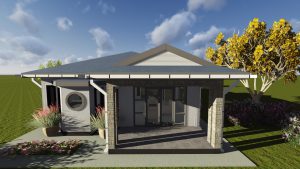As Homefill Construct we need to give you all the options, today we explore the advantages of building a smaller home.
 More Energy Efficient
More Energy Efficient
Smaller homes are often more energy efficient because they have less space to heat and cool, which means they have a lower ecological footprint.
Less Cleaning and Maintenance Required
Fewer rooms means less time spent on cleaning and home maintenance. This has been a huge perk for my family, since it means we spend more time outdoors, doing things we love.
Cozy and Intimate
Unlike the often gigantic rooms of a McMansion, small homes have small rooms. This gives each room, as well as the entire house, a feeling of coziness and intimacy that larger homes lack.
Less Expensive
Smaller homes are less expensive to live in. For instance, my 1920 home doesn’t have air conditioning, and I wouldn’t use it even if it did. Most small homes built before the 1940s were designed to stay cool using shade and cross-ventilation. During the summer months we live on the front porch, keep the windows open day and night, and use fans. During the summer, I spend less than $15 per month on electricity.
More Unique
We also chose a smaller home because we didn’t like the feel of the neighborhoods containing bigger homes. There are few trees, and the homes have a “cookie-cutter” appearance. Furthermore, the houses are set far back from the street, which means it would be harder to get to know the neighbors. Few, if any, have front porches big enough to sit and visit on. And none of them are within walking distance to town; we would have had to drive everywhere we wanted to go. Big and grand just isn’t our style.
